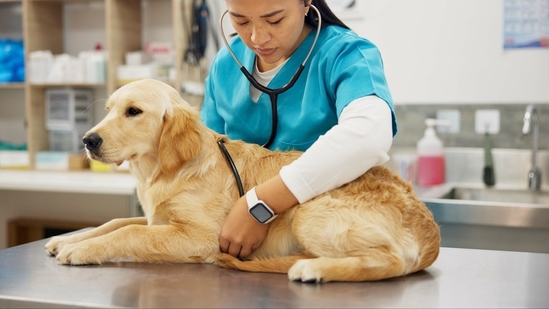Is your dog suddenly inactive and weak? Vet shares common pet emergencies and what you should do for immediate care
Keep yourself calm and collected while spotting health emergencies in your pet. Here's everything you need to know.
Pets are our cherished dopamine sources, with their constant goofiness and shenanigans keeping us on our toes. With our pets around, stress seems to melt away. But all is not smooth sailing every day. Panic strikes when emergencies happen out of the blue when the same energetic, tail-wagging companions are weak, making us feel helpless.

ALSO READ: Pet and play with a dog to reduce your stress: Study says it benefits our furry friend too
During this moment, it's important to stay calm and collected to think rationally. While you take your pet to vet, it's important you provide with certain immediate care to prevent their condition from worsening.
In an interview with HT Lifestyle, Dr Deepak Saraswat, Head Vet at Zigly, shared these common pet emergencies and what you should do before taking to the vet:
Bleeding (External or Internal)
What to do:
1. External bleeding: Start by applying firm pressure to the wound with a clean cloth that will help stop the bleeding. If your pet has injured themselves on a limb, try to elevate which will reduce blood flow. Once the bleeding is under control, loose the wound while keeping the dressing in place.
2. Internal bleeding: A few signs that can alarm you if your pet is bleeding internally include weakness or a swollen abdomen. In such a situation, keep your pet calm and get them to the vet as quickly as possible, as internal bleeding be life-threatening.

What not to do:
1. Remove embedded objects: If you find any object stuck in the wound, don't try to pull it out. It could cause more damage and lead to heavier bleeding; instead, take them to a vet.
2. Avoid using a tourniquet: Unless a vet specifically advises you to, avoid using a tourniquet. It can do more harm than good.
Ingestion of poisonous foods (Chocolate, Grapes, etc.)

What to do:
- Noticing ingestion of poisonous foods: If you noticed that your pet has eaten something like chocolate, grapes, or raisins, which can be poison for them, in such case call your vet immediately. The faster you act, the better it will be for your pet.
2. Inducing Vomiting: Induce vomiting only if your vet advises it. Doing it wrong can be harmful.
What not to do:
1. Don't wait for symptoms: If you suspect poisoning, don’t wait around, speak with your vet right away.
2. Don’t give milk or food: These can make the situation worse, so don’t try to feed your pet anything.
Heatstroke

What to do:
- Take to a cool spot: If your pet has heatstroke, take them to a cooler spot and using a damp cloth to apply room temperature water to their body can help lower their temperature.
- Sips of water: Offer small sips of water but don’t force them to drink.
What not to do:
- Avoid using ice-cold Water: Sudden temperature changes can make things worse, so avoid using ice or very cold water.
2. Don’t let them drink too much water: Giving them too much water too quickly can lead to bloating or vomiting, so offer it in small amounts.
ALSO READ: Seasonal change affecting your pets? Here's how you can take care of them
Note to readers: This article is for informational purposes only and not a substitute for professional medical advice. Always seek the advice of your doctor with any questions about a medical condition.






